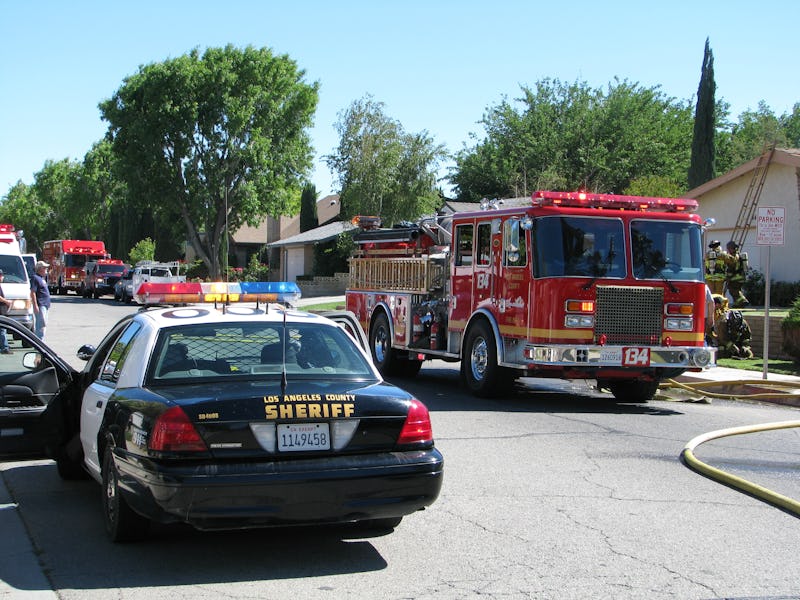Why Do Most Police, Fire, and Ambulance Sirens Sound the Same?
God bless 'em, but they've scared a shitload of people through time.

Unless you are privileged beyond even American comprehension, the sound of a siren should be familiar to you. That ghastly wail, building on the horizon, is our go-to elucidation of the befuddling physics principle, the Doppler effect.
If you’re over the age of 6, you can pretty much immediately identify whether a siren belongs to a police car, an ambulance, or a fire truck by the difference in pitch and progression. Police sirens punctuate their reliable rise and fall with a kind of warbling emergency-bridge:
Ambulances almost seem to play two sirens at once, a longer rise-and-fall similar to that of the police siren interspersed with a pulse-racing, tooth-vibrating beat in the middle:
And then there are fire engines, many of which are equipped with Federal Signal’s Q-Siren:
States have different laws regarding emergency vehicle sirens (and some have laws against using red and/or blue lights in your car, as some unlucky folks have likely discovered). So why do the siren sounds so alike across state lines?
As usual, technology, and scarcity, explains everything. It turns out that there are only three major siren manufacturers in the country, and they’re all working from a very similar template.
15 years ago, Carson Manufacturing was founded — and is still based — in Indianapolis, where they claim to have manufactured every police siren in America.
“We didn’t put our name on them,” says Toni Woodard, director of sales and marketing at Carson. “We sold them under a private label called Whelen. The name Carson was under the amplifier.”
Then 15 years ago, Whelen split off, becoming Whelen Automotive, and Carson became its own public company.
Among its past employees, Carson boasts the very inventor of the electronic siren, Jerry D. Smith, an engineer with Carson Manufacturing who also started Indianapolis’ first television station (in 1938!).
“Prior to [electronic sirens], they used to crank ‘em up,” says Woodard.
But Roger Olaniyan, a customer service rep at Federal Signal, disputes that claim.
“[Electronic] sirens were around for part of the war,” he says, referring to World War II — ya know, the war. “We sold sirens to fire and police companies after the Japanese surrendered.”
Olaniyan says the firefighter Q-siren signal sound is trademarked and has “more than 50 percent” market share.
And then there’s Star. The Chrysler to Carson and Federal’s GM and Ford, Star SVP (Signal Vehicle Products) makes sirens for all three emergency vehicles, and also hangs its hat on made-in-America manufacturing.
“We’ve been around since 1889,” says operations manager Joe Priestley, “before either Federal or Carson.” Making sirens? “Well, not exactly. Making lanterns and other things for emergency vehicles.”
Sirens sound alike, then, because they speak in a near-unified voice. The same, though, cannot be said for who gets the credit for that sound. It turns out the din over proprietary siren inventorhood is almost as loud as a SVP Magnum Dual Tone in a low-ceiling mountain pass. But these are siren companies; what else would you expect?